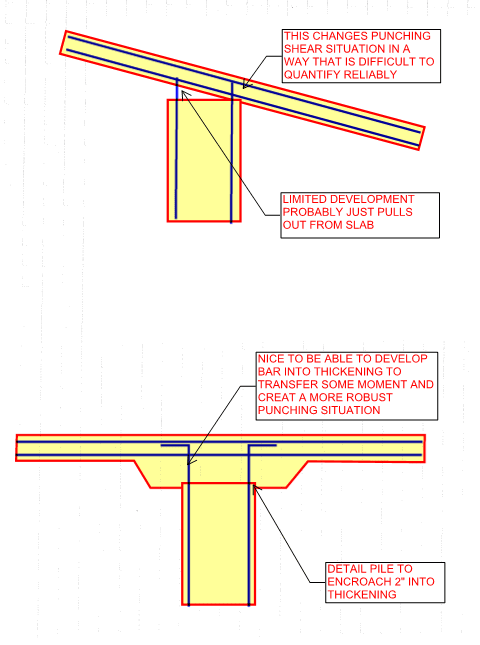struct_eeyore
Structural
Hi all,
I'm in need of direction about detailing a pile supported slab. I cannot find any provisions specifically requiring pile caps/drop caps at grade level slabs. Is there any issues with simply casting, say a 6" slab, directly on piles? My punching and moment transfer shears work fine. Would the IBC provision of minimum 3" pile embedment into concrete apply? In general, are lateral forces the only reason behind the 3" embed requirement? Can this be circumvented by projecting more rebar from pile into cap/slab for higher shear friction? Thanks!
I'm in need of direction about detailing a pile supported slab. I cannot find any provisions specifically requiring pile caps/drop caps at grade level slabs. Is there any issues with simply casting, say a 6" slab, directly on piles? My punching and moment transfer shears work fine. Would the IBC provision of minimum 3" pile embedment into concrete apply? In general, are lateral forces the only reason behind the 3" embed requirement? Can this be circumvented by projecting more rebar from pile into cap/slab for higher shear friction? Thanks!

